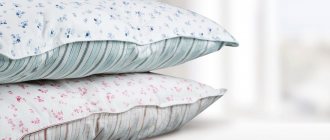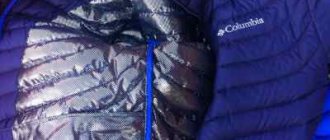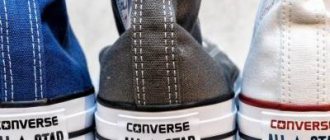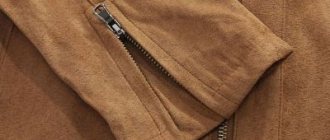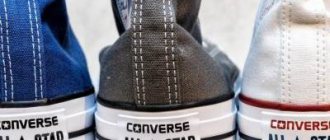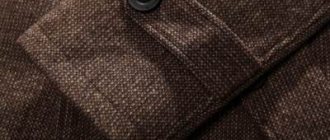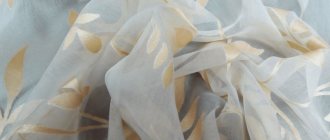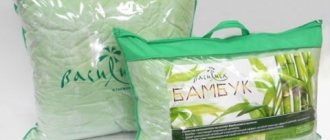It is not only possible, but also necessary to wash feather pillows, since over time the filler can accumulate a huge number of dust mites, which not only suck blood from those sleeping, but are also a strong allergen. It is possible to carry out the work on your own if you follow simple instructions and correctly organize all stages of the process.
Do I need to wash pillows?
Over the course of a year, these warm, soft and fluffy things became saturated with dust and then became wrinkled, became home to billions of microorganisms, and acquired an unpleasant odor. Of particular concern is the condition of the pillows. After all, we spend almost half of our entire lives in contact with the pillow. Inhaling dust and waste products of linen mites, people begin to suffer from allergic reactions or persistent runny nose and do not understand that the reason is in pillows that have not been washed for a long time.
Steam treatment
The least labor-intensive process is to treat a down pillow with a steam cleaner. If this equipment is not available at home, it can be replaced with an iron with a vertical steam function.
Steam cleaning occurs in several stages:
- Hang the product in a vertical position. Let it hang for 30 minutes.
- Steam the pillow on each side.
- Repeat the procedure.
- Carefully straighten the fluff with your hands.
- Place to dry on a horizontal surface.
Steam cleaning does not give the same result as a full wash, but it gets rid of fluff , mites, unpleasant odors, and refreshes the napkin. After cleaning with a steam cleaner, the product dries within a few hours.
Washing pillows with different fillings
The filling of down and feather pillows is the most contaminated, because this is the most favorable and natural environment for the reproduction and existence of many living creatures, which are visible only under a microscope. People have also liked down and feathers for a long time. Down and feather pillows are moderately soft and moderately elastic. It is not too hot to sleep on them in summer and not too cold in winter. Many people who have tried sleeping on pillows with various modern fillings have returned to down and feather pillows, considering them the most comfortable.
If feather pillows are given enough attention, washed or cleaned, and regularly dried in the sun and wind after washing and between washes, pillows with natural fillings will last a long time without causing problems.
Still, washing a pillow filled with down and feathers is an exclusive task. Few people decide to wash a feather filled pillow more than 1-2 times a year. For adherents of maximum sterility and cleanliness in the house, pillows with synthetic fillings - padding polyester or holofiber - are more suitable. Pillows with synthetic filling are easier to wash and dry. Ticks do not live in such an unnatural environment, and microbes will settle in if the pillow is rarely washed. Sleeping on these pillows is not so pleasant: they are less breathable. This is especially noticeable in the heat. However, the ability to frequently wash pillows with synthetic fills often outweighs the inconvenience.
How to dry a feather at home?
How to clean a pen at home?
- Open the product, beware of drafts and perform the operation indoors.
- Find a container, or better yet, pour warm water into the bath and add a soap solution.
- Soak the fluff for 2 hours.
- Drain the contaminated water and wring out the feathers. Repeat if necessary.
16 Feb
2022 Interesting materials:
How to check the validity of an electronic pass? How to check the validity of the Pobytu card? How to check the validity period of Avast antivirus? How to check the validity period of a Letual gift certificate? How does the stop prohibited sign apply? How to arrange the order of actions? How to use clothes to make your waist thinner? How to make a cotton gauze bandage using improvised means? How to make soil for flowers yourself? How to make an even hair cut yourself?
What's inside the pillow?
If you are not satisfied with either a feather pillow or a pillow with any synthetic filler, you can consider other options:
- a pillow filled with buckwheat husks - hypoallergenic and well-ventilated;
- bamboo - hygroscopic, does not cause allergies, does not promote the growth of bacteria;
- pillows with sheep or camel hair are very warm, more suitable for winter, they are believed to have healing properties, however, sometimes camel hair can cause allergies.
Pillows filled with husks cannot be washed. You can shake the filling out of the napkin, wash the napkin, and dry the husk in the sun. You just need to make sure that the wind does not scatter the light filler. It is not yet recommended to wash orthopedic memory foam pillows. All other types of pillows are washable. Let's figure out how best to wash different types of pillows.
Life time
An important point that is often not followed: each bedding has its own service life. It's limited. If it has expired, then no matter what efforts you make, you will not be able to restore the properties of the filler and, accordingly, the accessory as a whole.
- Down and feathers last about three years;
- Bamboo without additional covers - 3-4 years;
- Natural latex - 5-6 years, but with proper care even longer;
- Memory foam and other artificial fillers - about 5 years.
In order for the product to maintain its properties, it is important to follow the operating rules recommended by the manufacturer. They are on the label and the special case in which the pillow is delivered to the buyer.
How to wash feather pillows
First, the napkin is ripped open on one side, and the feather filling is laid out in pre-prepared small fabric covers for washing. The cases should be filled with feathers to approximately two-thirds of the volume. Covers should be securely zipped or sewn shut to prevent the pillow filling from clogging the washing machine during washing.
It is advisable to wash no more than three feather covers in one wash cycle.
In this case, the napkins are washed separately. Small feather pillows can be washed entirely. For better results, put laundry balls into the washing machine. They whip up the filler and the feathers don't stick together. For washing feather pillows, special detergents for washing down products are suitable. Pillows filled with feathers should be washed in a delicate cycle or in a special pillow washing mode at a temperature of about 30 degrees.
It is not recommended to use chlorine bleach for washing feather filled pillows./warn]
Feather pillow cleaning, restoration
In addition, by washing the pillow, you can clean and renew it, which will save time on drying the wet filling. It is recommended to carry out cleaning once every six months.
Where can you clean feather pillows?
You can clean them at home, or take them to specialized salons or dry cleaners, where they can be treated with special products and refilled.
How to clean feather pillows in specialized salons
Specialized salons or dry cleaners may use the following cleaning methods:
- Chemical. During dry cleaning, the filling is removed from the pillow and treated in a solvent that removes dust mites, dirt, dust and removes odors. After this, the feathers are dried and ventilated from the solution, which can damage the feathers in some cases.
- Dry cleaning. With this method, the filler is cleaned using a strong air flow.
- Using ultraviolet light. When using UV, all living organisms, as well as waste products, are guaranteed to be destroyed.
After cleaning, the filling is sewn into new pillowcases and the result is a clean and soft pillow.
How much does it cost to clean a feather pillow?
The cost of cleaning feather pillows in specialized salons, on average in Russia, costs from 250 to 400 rubles per unit. The price may vary depending on the type of cleaning, region of residence and the company itself that carries out this procedure.
How to clean feather pillows at home
To clean your feather pillows at home, you can vacuum them. This will help remove dust mite dust from the surface and a little from the filler, but everything inside will remain virtually unchanged. It is advisable to knock out the pillow first, which will help clean it of dust from the inside, but this will not remove it completely. At home, this can only be done by washing in a washing machine or by hand, or professional cleaning in a salon.
How to dry feather pillows after washing
Properly drying the pillows after washing is half the success of the event. There are two dangers when drying feather pillows:
- feathers may stick together into lumps;
- Mold will begin to develop in a poorly dried pillow; the smell of mold and dampness is very difficult to remove from the feather filling.
In both cases, the pillow will be damaged.
To prevent this from happening, dry the pillow as follows:
- scatter the feather filling on a flat surface and lay it out in the open sun, cover the top with gauze so that the feathers do not fly away;
- Every ten minutes we stir the feathers so that they do not stick together;
- If the pillow has been washed entirely, dry it in the sun, remembering to frequently fluff it and turn it over.
If the pillow is dried in the drying mode in a washing machine or in a separate dryer, it doesn’t matter; it’s better to then dry it in the sun.
Direct rays of the sun will not only dry the feather filled pillow in the best way, but will also disinfect it, destroying bacteria and mold in the pillow.
Helpful tips to extend the life of your bedding
- Change your pillowcase at least once a week to reduce the chance of contamination.
- Make your bed to protect it from dust and dirt. But not immediately after waking up: it is better to leave the bed for 20-30 minutes so that the remaining moisture from the body evaporates.
- The pillow should be stored in a dry cabinet with closed doors. It is better if the product is packaged in a special package.
- Be sure to use a protective cover, even if you change bedding very often. An "outer" pillowcase can not only prevent stains or dirt from appearing, but also make your sleep more comfortable thanks to the extra layer of filling.
- Follow the service life stated by the manufacturer. If they pass and you notice that you are sleeping worse, change your pillow.
- Don't limit yourself to just one product: choose a couple of options - for example, an anatomical model with cooling gel for the summer season and with a memory effect for the cold season.
How to wash pillows with synthetic filling
Pillows with synthetic filling can be washed without removing the filling from the pillowcase. It is recommended to wash with liquid detergents in a delicate wash mode at maximum spin and a temperature of 40 degrees. Wash balls are welcome. It is better to run two rinse cycles.
It is also better to dry pillows with synthetic filling in the sun and outdoors. Just like feather pillows, they need to be fluffed and turned over all the time.
If it is not possible to dry the pillow in the yard or on an open balcony, you should choose a well-ventilated place in the apartment for drying. An already dried pillow can be irradiated with an ultraviolet lamp, which is used for medical procedures and disinfection of housing.
Preliminary preparation for washing
To make washing as effective and safe as possible, you need to prepare the pillow. First, the dust is knocked out of it.
To avoid raising clouds of dust, first wrap the pillow in damp gauze.
Next you need to determine the type of filler. Further care of the product depends on the material.
Determining the filler material
It is not difficult to determine the filling of a pillow, because there are not many of them. The easiest way is to look at the label. If you did not tear it off after purchase, it may contain information about the filler material.
Conscientious manufacturers indicate the composition of the filler on the pillow label
If there is no label or information on it, try to determine by touch or sight if the bedspread is equipped with a zipper:
- the feather is perhaps the easiest to identify. This pillow is very heavy, individual particles in it cannot be felt. In some (especially old) products you can find sharp tips of feathers protruding from the napkin. This pillow can be machine washed, but you will have to transfer the filling into separate bags;
- Swan down can be natural or synthetic. The first is a very expensive material from which pillows with remarkable properties are made. Such products are light, elastic, hold their shape well, are comfortable and durable. Natural swan down is very soft, but at the same time quickly returns to its shape. The synthetic structure is made in the form of medium-sized (about 4–5 cm in diameter) balls, which can be felt with difficulty, but can be felt through the diaper. Both materials can be machine washed by transferring the filling from the napkin into bags, just like feather filling;
- Buckwheat husk is always easily identified through a napkin. You can feel the individual “grains” with your fingers. In addition, this pillow is quite heavy and rigid. This filler is not washed because there is simply no need for it. Buckwheat husks do not harbor parasites and do not collect dust. You can only clean the bedsheet by removing all the husks from it;
Buckwheat husk is a common healing filler. - Holofiber is a very light material. It is similar to padding polyester, but has a different structure. Holofiber is a mass of small (about 1–2 cm in diameter) balls that are easily separated from each other. This type of filler cannot be torn, unlike padding polyester. It cannot be washed in a machine. This material is recommended for hand washing in cold water only. Otherwise, the filler will decrease in volume and lose its shape;
To the touch, holofiber can be distinguished from padding polyester due to its structure - the material is presented in the form of many small soft balls - padding polyester is as light as holofiber, but has a more linear structure. This material, as a rule, is laid in layers and quickly loses its shape and volume during use. The shelf life of synthetic padding pillows is only a couple of years. Like holofiber, it is better to wash synthetic padding by hand or get by with washing the napkin. In this case, the filler can simply be ventilated;
Sintepon is a very soft material - Bamboo fiber pillows are very elastic and hold their shape perfectly. Of course, over time they cake, like others. However, after beating, such a pillow retains its volume for a long time, unlike the same padding polyester. Bamboo products can be machine washed directly in the napkin at a temperature not exceeding 40 degrees;
Bamboo fiber is visually similar to padding polyester, but less viscous and slippery - Anti-stress pillows are usually filled with polystyrene balls. They are very easy to identify by touch - these are small, moderately hard particles that easily roll around inside. They do not lose their shape even with frequent washing and prolonged use. This pillow can be easily machine washed;
The composition of the anti-stress pillow filler material may vary, but its shape in the form of small balls always remains the same. - A latex pillow is actually a monolithic piece of synthetic or natural material with perforations. It may become deformed when placed in the washing machine drum. She only recommends hand washing.
Latex pillows get dirty much less than others
Additional care recommendations
As a summary, we note that it is important to follow the care and washing instructions from the manufacturer. Study the information on the packaging, label or website. Anatomical products cannot be stored rolled up or in vacuum bags.
After long-term storage, the pillow should be carefully cleaned with a dry microfiber cloth or vacuum cleaner.
Are you worried about the appearance of the product? Wash the pillow cover with a liquid detergent; it does not have such an aggressive effect on the fabrics, unlike washing powder. Consider the type of filling and the appearance of the cover when choosing a pillow. Another sure way to avoid making a mistake is to study our instructions for choosing a pillow. High temperatures are the enemy of latex, polyurethane foam and other synthetics, fluff, wool, and organics, so washing at temperatures above 40 degrees and ironing is prohibited.
Preparatory stage
- Worry in advance about where you will pour the washed and dried filling - into an old but clean bedsheet, or is it better to sew a new one? Fortunately, now in stores there is a wide selection of teak - dense fabric for making bedsteads.
- To properly wash and dry your feathers at home, prepare a cover made of loose material. An old pillowcase will also work well. You can sew a bag from a thick tulle curtain. It is not recommended to do this with gauze: the fluff will come out! It’s especially not worth using two layers of gauze, because the feathers will get stuck between the layers, and after washing your gauze will turn into the skin of a strange animal.
- So, we have decided on the material for the case, and now we still need to choose the right sizes. Make the width of the cover the same as the width of the pillow, and make the length twice as long. This is necessary in order to properly wash and dry the filling. Don’t be lazy to sew two bags, because the smaller the contents, the better it will be cleaned.
You can wash pillows at home using the old-fashioned method, or you can take advantage of the achievements of technological progress.

